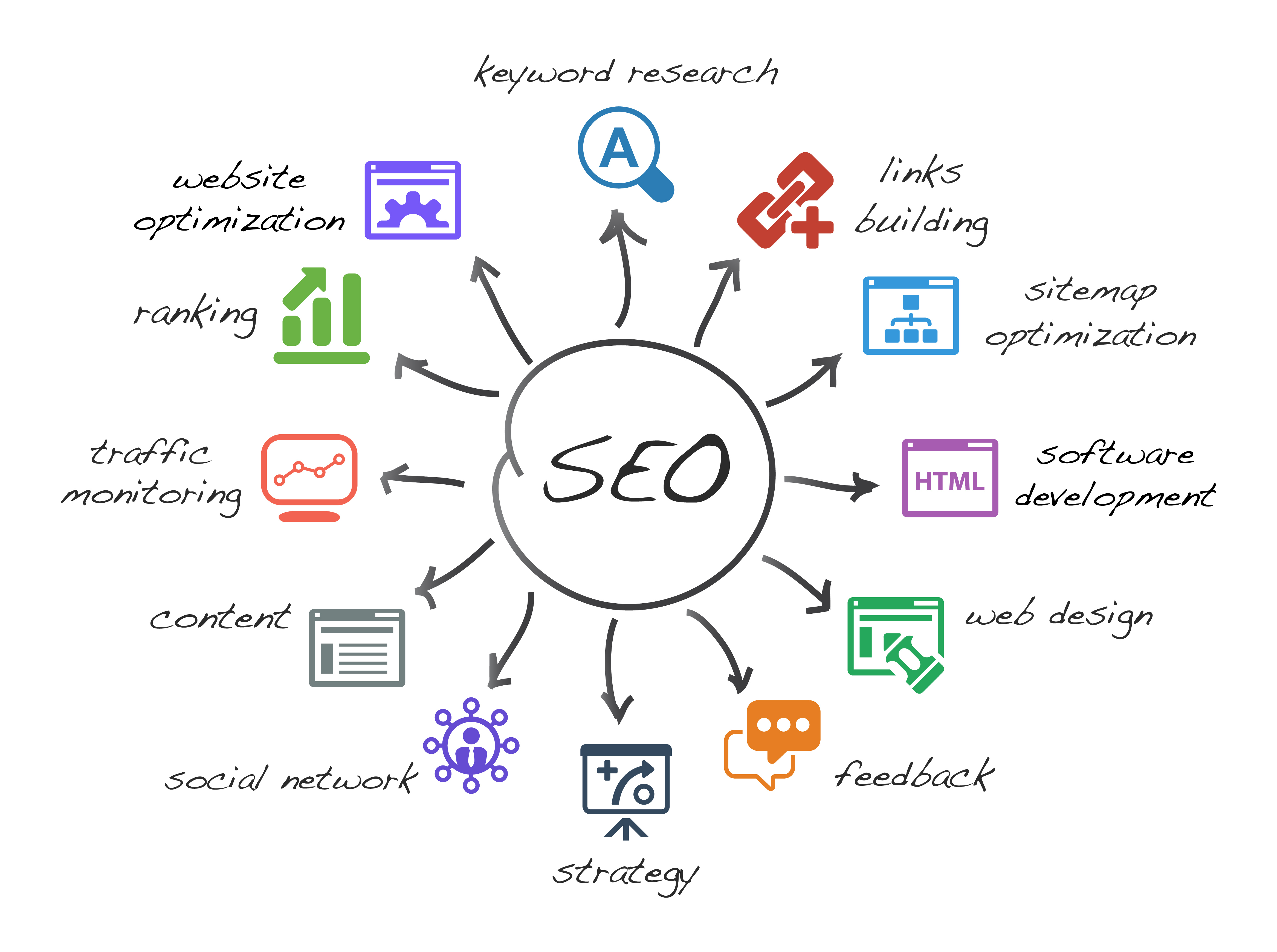
In the digital age, having a business website is just the first step. The real challenge is making sure your site stands out in the vast ocean of the internet. Imagine your website as a lighthouse; it needs to shine brightly to guide potential customers to your doorstep. This is where Search Engine Optimization (SEO) comes into play. SEO is the beacon that makes your business website visible, attracts traffic, and improves your rankings. Let's dive into how to use SEO for business website optimization and turn your site into a beacon of success.
Understanding SEO: The Foundation
SEO is not just about keywords and links; it's about creating a user-friendly experience that search engines love. Think of SEO as the architect of your digital presence. It ensures that your website is not just beautiful but also functional and accessible.
What is SEO?
SEO is the process of optimizing your website to increase its visibility on search engines like Google. It involves a combination of strategies, techniques, and best practices to improve your site's rankings, attract more traffic, and ultimately, convert visitors into customers.
Why is SEO Important for Your Business Website?
SEO is crucial because it drives organic traffic to your site. Organic traffic is the gold standard of web traffic because it's free and highly targeted. People who find your site through search engines are actively looking for what you offer, making them more likely to convert.
Key SEO Strategies for Business Websites
Keyword Research: The Backbone of SEO
Keywords are the building blocks of SEO. They are the terms and phrases that people use to search for information online. Effective keyword research helps you understand your audience's needs and tailor your content to meet those needs.
How to Conduct Keyword Research
- Brainstorm Seed Keywords: Start with a list of core keywords related to your business.
- Use Keyword Tools: Tools like Google Keyword Planner, SEMrush, and Ahrefs can help you find related keywords and their search volumes.
- Analyze Competitors: See what keywords your competitors are ranking for and identify gaps you can fill.
- Long-Tail Keywords: Focus on long-tail keywords (three or more words) that are less competitive but highly targeted.
On-Page SEO: Optimizing Your Content
On-page SEO refers to the optimization of individual web pages to improve their rankings and attract more traffic. It includes elements like title tags, meta descriptions, headers, and content optimization.
Title Tags and Meta Descriptions
Title tags and meta descriptions are the first things users see in search results. They should be compelling and include your primary keywords.
Headers (H1, H2, H3)
Headers help structure your content and make it easier to read. Use H1 for the main title, H2 for subheadings, and H3 for sub-subheadings. Include relevant keywords in your headers.
Content Optimization
Your content should be high-quality, engaging, and optimized for your target keywords. Use keywords naturally and avoid keyword stuffing.
Technical SEO: The Nuts and Bolts
Technical SEO focuses on the backend of your website. It ensures that your site is crawlable, mobile-friendly, and fast.
Site Speed
Slow-loading websites can hurt your rankings and user experience. Use tools like Google PageSpeed Insights to check your site speed and make improvements.
Mobile-Friendliness
With more people using mobile devices to browse the web, having a mobile-friendly site is crucial. Use Google's Mobile-Friendly Test to ensure your site is optimized for mobile.
XML Sitemap
An XML sitemap helps search engines understand the structure of your site and find all your pages. Create and submit an XML sitemap to Google Search Console.
Off-Page SEO: Building Authority
Off-page SEO involves activities outside your website that impact your rankings. It includes link building, social media marketing, and guest blogging.
Link Building
High-quality backlinks from authoritative sites can significantly boost your rankings. Focus on earning natural links through valuable content and strategic partnerships.
Social Media Marketing
Social media can drive traffic to your site and increase your brand's visibility. Engage with your audience on platforms like Facebook, Twitter, and LinkedIn.
Local SEO: Reaching Local Customers
If your business serves a specific geographic area, local SEO is essential. It helps you rank higher in local search results and attract local customers.
Google My Business
Claim and optimize your Google My Business listing. Include accurate information, photos, and customer reviews.
Local Citations
Ensure your business is listed in local directories like Yelp, Yellow Pages, and industry-specific sites. Consistency in your NAP (Name, Address, Phone number) is crucial.
Advanced SEO Techniques
Schema Markup
Schema markup helps search engines understand your content better. It can improve your site's visibility and click-through rates by adding rich snippets to your search results.
Voice Search Optimization
With the rise of voice assistants, optimizing for voice search is becoming increasingly important. Focus on long-tail keywords, conversational language, and FAQs.
International SEO
If you target multiple countries or languages, international SEO is essential. Use hreflang tags to tell search engines which language and country your content is targeting.
Conclusion: Shine Bright with SEO
Optimizing your business website for SEO is not a one-time task; it's an ongoing process. By implementing the strategies and techniques outlined in this guide, you can turn your website into a beacon that attracts traffic, improves rankings, and drives business growth.
Remember, SEO is not just about pleasing search engines; it's about creating a valuable and engaging experience for your users. Keep learning, keep optimizing, and keep shining bright.
FAQs
What is the difference between on-page and off-page SEO?
- On-page SEO refers to optimizations made directly on your website, such as content optimization and meta tags. Off-page SEO involves activities outside your website, like link building and social media marketing.
How long does it take to see results from SEO?
- SEO is a long-term strategy. It can take several months to see significant results, depending on factors like competition, keyword difficulty, and the quality of your SEO efforts.
What is the importance of mobile-friendliness in SEO?
- Mobile-friendliness is crucial because more people are using mobile devices to browse the web. Google also uses mobile-first indexing, meaning it primarily uses the mobile version of your site for indexing and ranking.
How do I conduct keyword research for my business website?
- Start with brainstorming seed keywords related to your business. Use keyword tools to find related keywords and their search volumes. Analyze your competitors' keywords and focus on long-tail keywords.
What are the benefits of local SEO for my business?
- Local SEO helps you rank higher in local search results, attract local customers, and increase your business's visibility in your community. It's essential for businesses that serve a specific geographic area.


By following this comprehensive SEO guide, you can transform your business website into a powerful tool for attracting traffic, engaging users, and driving growth. Happy optimizing!
Posting Komentar